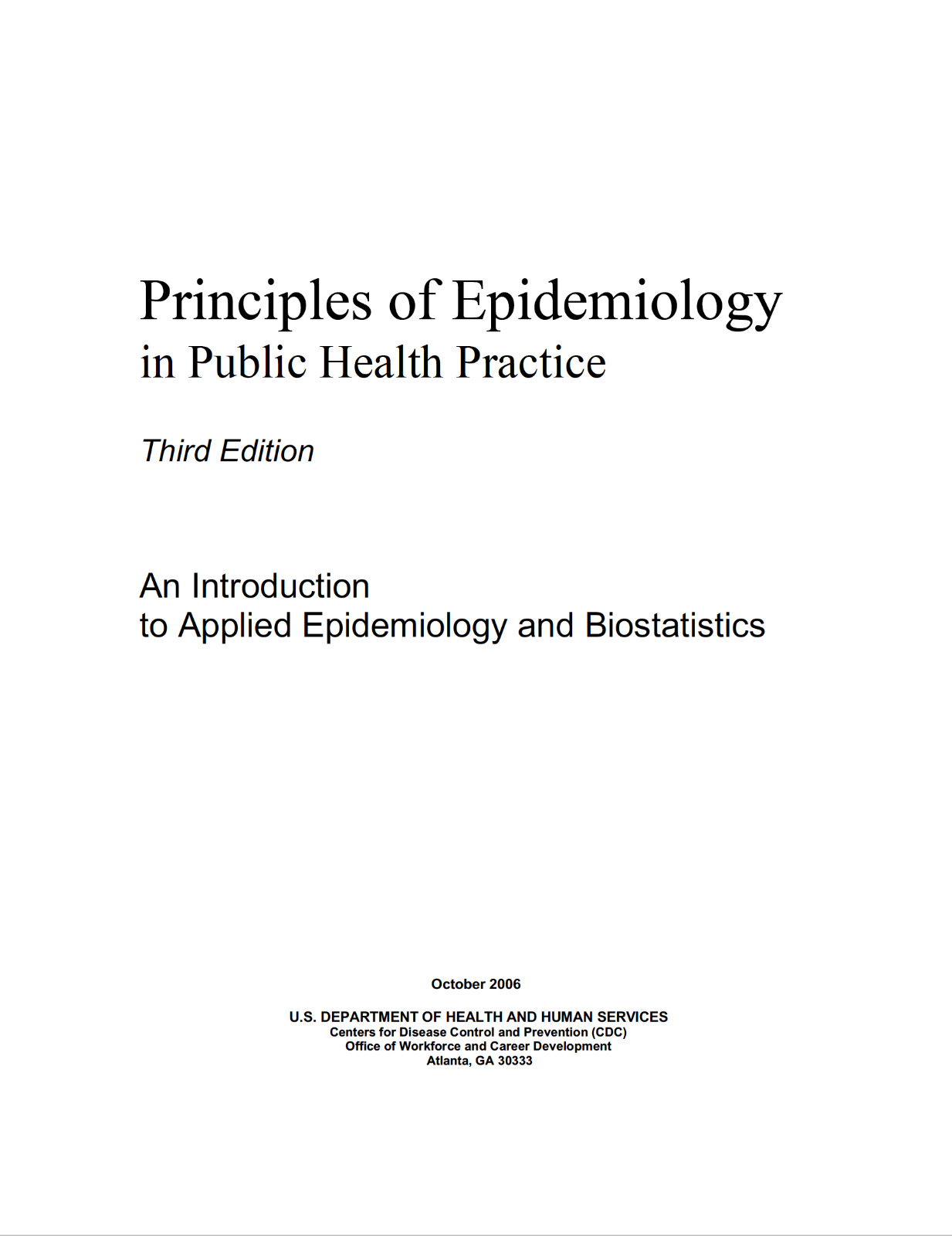511 Page Principles of Epidemiology in Public Health Practice Manual on CD For Sale

When you click on links to various merchants on this site and make a purchase, this can result in this site earning a commission. Affiliate programs and affiliations include, but are not limited to, the eBay Partner Network.
511 Page Principles of Epidemiology in Public Health Practice Manual on CD:
$19.99
Thank You!
If you do not wish to have your item(s) delivered on data disc(s), I can provide them on a flash drive and other means as well. Just let me know if a disc does not work for you and we can discuss delivery by other methods.
COMBINING SHIPPING COSTS
Are you purchasing multiple items? I will: a) combine all invoices before payment and charge shipping equivalent to one item, or b) refund all shipping costs in excess of one item after payment.
© AP6.0All derivative (i.e. change in media; by compilation) work from this underlying U.S. Government public domain/public release data is COPYRIGHT © GOVPUBS
$3.00 first class shipping in U.S.; $13.00 for air post outside of United States. I will combined sales for reduced postage prior to payment - simply ask for a combined invoice!
See numerous images of actual pages within manual.
Be sure to see my many other flight manual and aviation maintenance and parts manuals on CD sales.
Public domain U.S. government manual in PDF format copied to blank CD.
Includes the easy to use Adobe Acrobat Reader software for viewing and printing publications.
FULL TITLE:
Principles of Epidemiology in Public Health Practice
Third Edition
An Introduction to Applied Epidemiology and Design
This course covers basic epidemiology principles, concepts, and procedures useful in the surveillance and investigation of health-related states or events. It is designed for federal, state, and local government health professionals and private sector health professionals who are responsible for disease surveillance or investigation. A basic understanding of the practices of public health and biostatistics is recommended.
Course Materials
The course materials consist of six lessons. Each lesson presents instructional text interspersed with relevant exercises that apply and test knowledge and skills gained.
Lesson One: Introduction to Epidemiology
Key features and applications of descriptive and analytic epidemiology
Lesson Two: Summarizing Data
Calculation and interpretation of mean, median, mode, ranges, variance, standard deviation, and confidence interval
Lesson Three: Measures of Risk
Calculation and interpretation of ratios, proportions, incidence rates, mortality rates, prevalence, and years of potential life lost
Lesson Four: Displaying Public Health Data
Preparation and application of tables, graphs, and charts such as arithmetic-scale line, histograms, pie chart, and box plot
Lesson Five: Public Health Surveillance
Processes, uses, and evaluation of public health surveillance in the United States
Lesson Six: Investigating an Outbreak
Steps of an outbreak investigation
A Glossary that defines the major terms used in the course is also provided at the end of Lesson Six.
Supplementary Materials
In addition to the course materials, students may want to use the following:
• A calculator with square root and logarithmic functions for some of the exercises.
• A copy of Heymann, DL, ed. Control of Communicable Diseases Manual, 18th edition, 2004, for reference. Available from the American Public Health Association [phone removed by ].
Objectives
Students who successfully complete this course should be able to correctly:
• Describe key features and applications of descriptive and analytic epidemiology.
• Calculate and interpret ratios, proportions, incidence rates, mortality rates, prevalence, and years of potential life lost.
• Calculate and interpret mean, median, mode, ranges, variance, standard deviation, and confidence interval.
• Prepare and apply tables, graphs, and charts such as arithmetic-scale line, scatter diagram, pie chart, and box plot.
• Describe the processes, uses, and evaluation of public health surveillance.
• Describe the steps of an outbreak investigation.
General Instructions
Self-study courses are “self-paced.” We recommend that a lesson be completed within two weeks. To get the most out of this course, establish a regular time and method of study. Research has shown that these factors greatly influence learning ability.
Each lesson in the course consists of reading, exercises, and a self-assessment quiz.
Reading Assignments
Complete the assigned reading before attempting to answer the self-assessment questions. Read thoroughly and re-read for understanding as necessary. A casual reading may result in missing useful information which supports main themes. Assignments are designed to cover one or two major subject areas. However, as you progress, it is often necessary to combine previous learning to accomplish new skills. A review of previous lessons may be necessary. Frequent visits to the Glossary may also be are included within each lesson to help you apply the lesson content. Some exercises may be more applicable to your workplace and background than others. You should review the answers to all exercises since the answers are very detailed. Answers to the exercises can be found at the end of each lesson. Your answers to these exercises are valuable study guides for the final examination.
Self-Assessment Quizzes
After completing the reading assignment, answer the self-assessment quizzes before continuing to the next lesson. Answers to the quizzes can be found at the end of the lesson. After passing all six lesson quizzes, you should be prepared for the final examination.
• Self-assessment quizzes are open book.
• Unless otherwise noted, choose ALL CORRECT answers.
• Do not guess at the answer.
• You should score at least 70% correct before continuing to the next lesson.
Tips for Answering Questions
• Carefully read the question. Note that it may ask, “Which is CORRECT?” as well as “Which is NOT CORRECT?” or “Which is the EXCEPTION?”
• Read all the choices given. One choice may be a correct statement, but another choice may be more nearly correct or complete for the question that is

Related Items:
Vogue Sewing, Fabrics, Fashion, etc. 511 Page 1982 Hardback
$15.00
The Marvel Age of Comics 1961-1978 Age 8+ Pages 511 Multicolor
$34.00
511 Page Principles of Epidemiology in Public Health Practice Manual on CD
$19.99



